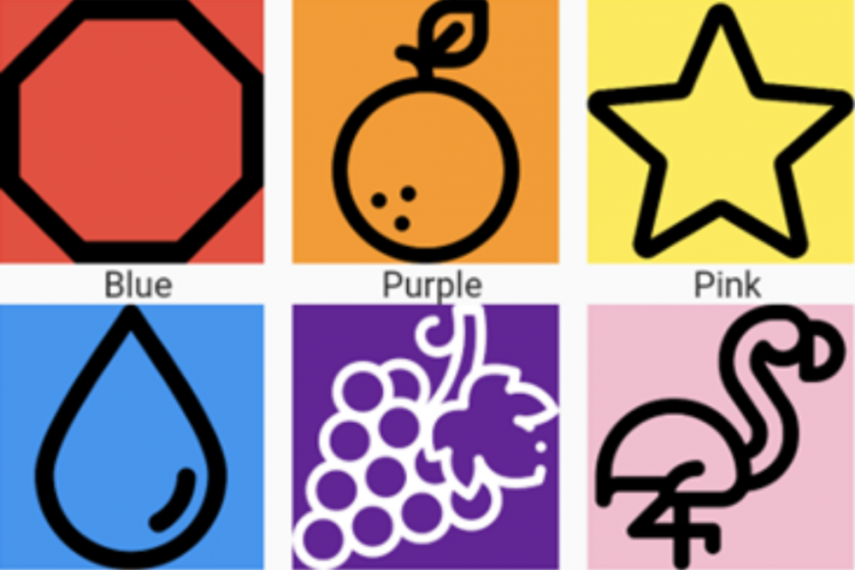U of G Research Supporting People with Colour Blindness

Researchers are helping people who are colour blind distinguish between colours using symbols
There are an estimated 300 million people worldwide who have colour vision deficiency (commonly known as colour blindness), a condition where certain colours cannot be detected by the human eye the way that the majority of the population can. Our society colour codes the physical world, such as medication labeling, to signify changes, categorize items, and more. This can lead to an accessibility issue for those with colour vision deficiency.
People with colour vision deficiency often find it frustrating and even dangerous when faced with a task that requires accurately identifying or distinguishing between different colour codes. To assist people with colour vision deficiency navigate our heavily colour-coded world, there has been research conducted to explore the use of inserting patterns over colours. These patterns are often unintuitive and require significant training to understand.
Colour patterns to help those with colour vision deficiency distinguish between colours
University of Guelph School of Computer Science professor Dr. David Flatla and team have developed two new colour patterns to assist people with colour vision deficiency to more easily distinguish between colours. Their first pattern, ColourIconizer, uses detailed patterns that provide a direct analogy for the colour they represent. For example, blue is represented using a water droplet and pink uses a flamingo. Their second pattern, ColourMix, assigns shapes to the colours red, yellow, green and blue. For example, red is represented as an X and green as a + (positive sign). These shapes are then combined to create additional shapes that represent new colours.
They compared their two new colour patterns to the previously published colour pattern ColourMeters, enlisting volunteers with and without colour vision deficiency for the study, via Reddit and Facebook. The evaluation contained three new colour tasks — Selection, Transition and Sorting. The Selection Task used a grid of varying colours, which an individual with colour vision deficiency could confuse for the targeted colour, and the participant had to select all the target-coloured blocks. The Transition Task required the participant to order a set of colours to complete a gradient, for example moving from orange to yellow to green. Lastly, the Sorting Task presented a single colour that the participant needed to label with the correct colour name.
One pattern exceeded the others in terms of accuracy and performance
ColourMix, ColourIconizer and ColourMeters each had their own strengths when it came to identifying colours. ColourMix provided the best overall performance for all three tasks, whereas ColourIconizer helped the most in both the Selection and Sorting Tasks but failed to provide much assistance for the Transition Task. Importantly, ColourMeters was shown to be not as helpful as previously demonstrated in an earlier evaluation. Overall, ColourMix showed great promise as a future colour pattern option, as it combines the best aspects of both ColourIconizer and ColourMeters. Future work will aim to enhance pattern training, test the limits of patterns, test patterns in real-world settings, and further incorporate the experiences of end users.
“We observed through our study that there is indeed a clear benefit to different types of colour patterns for communicating colours,” says Flatla. “This study and future research will aim to help people with Colour Vision Deficiency distinguish and interpret colours throughout their lives in a world that is driven by colour-coding.”

Dr. David Flatla is an Associate Professor in the School of Computer Science
Geddes C, Flatla D, Tigwell G, Peiris RL. Improving Colour Patterns to Assist People with Colour Vision Deficiency. CHI Conference on Human Factors in Computing Systems. 2022 Apr 29. doi: 10.1145/3491102.3502024.